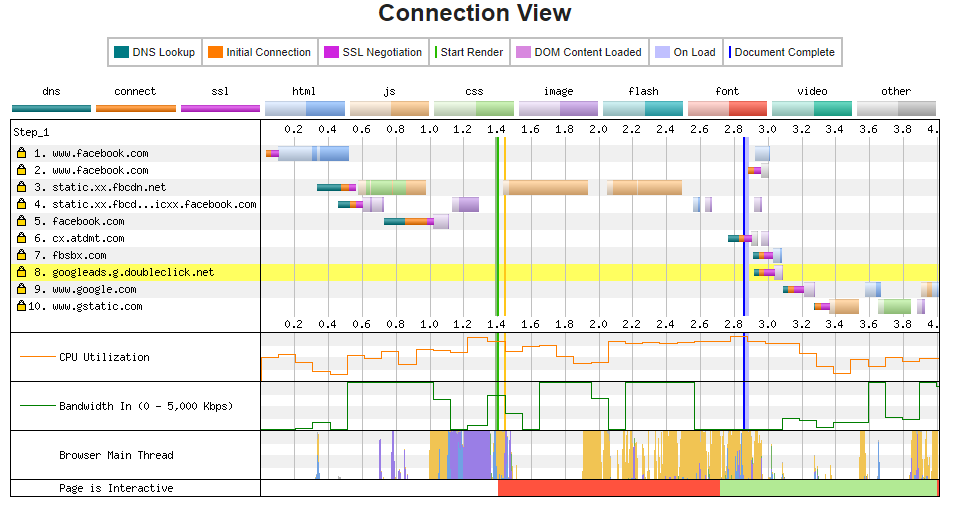If you are working from your organization's office, the chances are good that you are enjoying the responsiveness of your corporate LAN, thereby guaranteeing speedy load times for websites and applications.
Yahoo! found that making pages just 400 milliseconds faster resulted in a 9% increase in traffic. The faster site also doubled the number of sessions from search engine marketing and cut the number of required servers in half.

Don’t Fly Blind – Did Someone Say Waterfall?
Waterfall charts let you visualize cumulative data sequentially across a process. Performance waterfalls for webpages, shown below, generated using webpagetest.org, lets you see the series of actions that occur between a user and your application in order for that user to view a specific page of your site.

The Webpagetest.org waterfall chart below shows the connections view with a breakdown showing DNS Lookup, TCP connection establishment, Time to First Byte (TTFB), rendering time and document complete.
[You might also like: Considerations for Load Balancers When Migrating Applications to the Cloud]

Optimizing Web-Facing Apps That Span Cloud and/or Data Center Boundaries
The performance of a website correlates directly to that web site’s success. The speed with which a web page renders in a user’s browser affects every conceivable business metric, such as page views, bounce rate, conversions, customer satisfaction, return visits, and of course revenue.
Latency, payload, caching and rendering are the key measures when evaluating website performance. Each round trip is subject to the connection latency. From the time the webpage is requested by the user to the time the resources on that webpage are downloaded in the browser is directly related to the weight of the page and its resources. The larger the total content size, the more time it will take to download everything needed for a page to become functional for the user.
Using caching and default caching headers may reduce the latency since less content is downloaded and it may result in fewer round trips to fetch the resources, although sometimes round trips may be to validate that the content in the cache is not stale.
Browsers need to render the HTML page and resources served to them. Client-side work may cause poor rendering at the browser and a degraded user experience, for example, some blocking calls (say 3rd party ads) or improper rendering of page resources can delay page load time and impact a user experience.
The low hanging fruit to enable optimizations are easy and obvious such as reducing the number of connection set up using keep-alive and pipelining. Another easy fix is to compress the objects to reduce the size of the payload for the data received by the browser and to utilize caching to manage static objects and pre-fetch data (if possible). A content delivery network (CDN) may serve static contents closer to the users to reduce latency. More involved and advanced optimizations may include techniques to consolidate resources when fetching from the server, compressing images that are sent to the browser depending on the type of device, the speed of connection, the location of the user, and reducing the size of objects requested by content minification. Some additional techniques, such as delaying ads after the page has become usable to the user, may improve the perception of web page and applications.
Read "Just Group Achieves Web Page Acceleration" to learn more.
Download Now